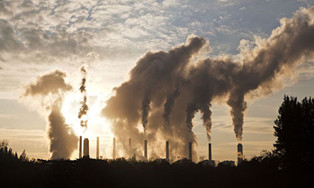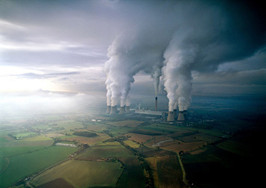Coal combustion has been increasing rapidly in much of Asia, including in China and India (IPCC, 2013). Fine particulate matter (PM2.5: particles with an aerodynamic diameter of ≤2.5 μm) emitted/formed from coal combustion are key outdoor air pollutants of great environmental concern because they have serious adverse effects on public health (IARC, 2013). Coal combustion emits primary PM2.5, sulfur dioxide (SO2), and nitrogen oxides (NOX), leading to the formation of secondary PM2.5 through the gas to particle conversion process (Seinfeld and Pandis, 2016). Coal combustion in China contributed to 40% of the total PM2.5 concentration on a national level (averaged from 74 major cities) for the year 2013 in a simulation. Among the major coal-burning sectors, industrial coal burning is the dominant contributor (17%), followed by coal combustion in power plants (9.8%). A significant contribution from thermal power plants to SO2 (up to 32%) and NO2 (up to 15%) concentrations was also reported in the Kinki region in Japan. Thus, coal-fired power plants can be a major source of PM2.5, especially in East Asia. Furthermore, a detailed impact analysis of power plants in the Mid-Atlantic and lower Great Lakes regions of the U.S. on secondary PM2.5 was reported by Buonocore et al. (2014). They found that ammonium sulfate concentrations by SO2 and NOX emissions from power plants contribute to 112% and 66% of the impact, respectively, while ammonium nitrate concentrations by SO2 and NOX emissions contributed to −13% and 34%, respectively. These different impacts of SO2 and NOX on aerosol formation resulted from their complex nonlinear chemical formation processes. For details, please click https://systems.enpress-publisher.com/index.php/JGC/article/view/563
|







